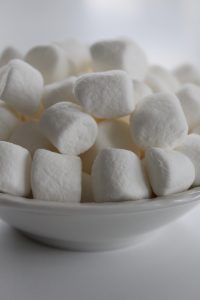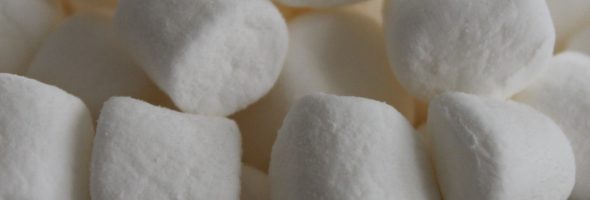3-Dimensional Geometry
Grade 3

Created by Dane Sweeney & Nick Kruks
Introduction
Geometry is derived from the Greek words geo, meaning earth, and metron which means measure. So, geometry is about the measuring of the earth. Everyday students are exploring and interacting with the world around them which is composed of thousands of simple to complex 3-dimensional objects. It is important for students to know and define these objects based on their attributes.
Geometry comes up in many possible future careers ranging from engineers to architects to artists. Drawing on these fields to show students that geometry is found throughout our world and is much more experiential than drawing on a piece of paper is essential to boost their enjoyment and excitement about geometry and many of the other interrelated concepts of mathematics, science, art, and many more. We can connect geometry easily to Indigenous cultures and examine traditional items and buildings and how they are composed of 3D objects.
This lesson focuses on exploring shapes and learning to both describe them as well as recognize the attributes that are used to define shapes. The other focus of the lesson will pertain to constructing objects and using physical representation, experiential learning, and inquiry to help solidify the understanding of 3D objects and their attributes. Through this exploration we want students to discuss with one another and help teach each other about these objects. Promoting social interaction and learning through discovery is a vital way to engage students and get them actively participating in problem solving and learning.
Learning Objectives
At the end of this lesson, students will be able to say:
- I understand that 3-dimensional objects compose our environments and are all around us
- I can name 3-dimensional objects including sphere, cube, polygonal pyramids, polygonal prisms, cylinder; and I can describe 3-dimensional objects using attributes, including number of faces, edges, and vertices
- I can construct an object and describe the attributes and point them out on my objects
Curricular Connections
Big Idea
- Objects and shapes have attributes that can be described, measured, and compared
Competencies
- Communicate mathematical thinking in multiple ways
- Represent mathematical ideas in concrete, pictorial, and symbolic forms
- Develop, demonstrate, and apply mathematical understanding through play, inquiry, and problem solving
Content
- Multiple attributes of 3D objects (grade 2)
- Construction of 3D objects (grade 3)
First People’s Principles
- Learning involves time and patience
- Giving students time to work through problems and creating a classroom environment where time does not put pressure on students to finish quickly is vital
- Learning is holistic, reflexive, reflective, experiential and relational (focused on connectedness, on reciprocal relationships, and a sense of place)
- Working in small groups helps to build relations and connections, students being able to help teach their peers is great for fostering reciprocal relationships; using their local environments to discover 3D objects connects us back to place; finishing the lesson with time for reflection helps students solidify their understanding and make connections
Prior Knowledge
In Grades 1 and 2 students will have learned about comparing 2D shapes and 3D objects and have an understanding that 3-dimensional objects have height, width and depth. It is also important for students to understand that objects can be defined based on multiple attributes. Students should have some familiarity with common 3D objects and their names (cube, sphere, cylinder, pyramid, etc). Students should also be comfortable with sorting objects based on common attributes or features they possess. We will be assessing these skills at the beginning of the lesson and teaching them so all students are at the same starting point to begin the lesson.
Important Terms
There are several terms that are important for students to understand prior to completing the lesson.
- Face – flat or curved surface on the object
- Vertices – point of an object where two or more edges converge or meet
- Edges – a line segment where two faces meet or converge
- 3D object names: cube, cuboid, sphere, cone, polygonal pyramids, and polygonal prism
Assessments
As this is an introduction lesson for 3D geometry, the focus of the assessment will be formative. It is important for the teacher to gain an understanding of the knowledge within their class and use this for future lesson planning. The teacher will be walking around and listening to students explain their thinking using attributes of 3D objects and naming those objects accurately. They will also be mindful of students who are using key terms and how they are sorting the objects and describing their attributes. Class discussions are another important time for the teacher to assess student understanding. The teacher should also be monitoring students as they create shapes and see how they are problem solving and creating shapes to see how accurately they are matching their creation with the object they are attempting to replicate.
Required Materials
This lesson requires the following materials:
- Variety of 3D objects
- Marshmallows
- Spaghetti
- Bags
Lesson Activities
- Begin the lesson with having students explore the classroom for objects that they see in their environment (or if weather and time permit, take the students outside of the school to examine objects they find around the school grounds and in nature). Students will have 1 minute to discover and name as many objects as they can. This can be done on their own or within a pairing or small group. This ends with a discussion about the found objects, naming and describing them. Here we will go over the key terms and make sure all students have the correct names for objects (sphere, cube, prisms, pyramids, cylinder), as well as the definitions of the three attributes focused on this lesson: face, edge and vertice.
- Next, students in groups of 4 to 5 will be given a bag containing various shapes which they will empty onto their desks. They will examine and explore these objects and distinguish them from one another; students in their small groups discuss what traits make each object unique and why they sorted their objects in the ways they did. Here it is also important for students to start using the names of objects and get familiar with their attributes.
- Following the object sorting, students will be given marshmallows and spaghetti to construct their own 3D shapes. Students, working individually, will be given the open ended task of creating any 3D object they choose. This will help solidify students’ understanding of attributes, highlighting the concept of vertices and edges. This task is also highly differentiated. Students who want more of a challenge can create complex shapes.
- The lesson will finish with discussing the students experience of the day, what objects they created, and the teacher will ask some reflection questions, open the space for any student questions or concerns and going over the key terms from the lesson
Differentiated Learning
This lesson is designed to create high personalization as well as the use of social learning to promote students learning and exploration of 3D objects.
- By starting the lesson with reviewing shape names and the definition of attributes we are making sure everyone is at the same starting point and has the requisite vocabulary to participate fully in the lesson; it is important to also make key terms or images available during times where students are working so they can readily look for important information
- Social learning through small groups and partnerships allow for students to receive timely help from other students they are working with fostering classroom connections amongst students and a sense of community
- The open-ended tasks allow for freedom with the challenges a student has during a lesson. With constructing an object, this allows students the opportunity to challenge themselves to their desired difficulty and build more complex shapes if they are looking for a greater challenge. Through exploration of their classroom to find 3D objects, students who have yet to master their objects can find ones they are familiar and comfortable with while allowing the room for more advanced students to break down objects into smaller objects or shapes. Students have the chance to find as many objects as they can and don’t need to worry about finding a certain number of objects.
Key Questions
- What makes a shape 2 dimensional, and what makes an object 3 dimensional?
- What makes a sphere different from a cube?
- What characteristics does a cube have? How many faces? Edges? Vertices?
- Where do you see this shape in your day to day life?
- What 2D shape is that face? Is the face a square, triangle, pentagon, etc?
- Were there any shapes you know but didn’t see today?
- What helped you most to understand the names of 3D objects and what attributes they have?
- What mistakes happened today that helped your learning?
- What questions do you still have about 3D objects?
Follow Up Activities
- Going outside to discover shapes in nature and around the local environment
- Creating 3D objects from premade nets, building blocks, out of loops of string
- Analyzing objects further by examining their symmetry along different axes
- Geometry Guess Who
- Exploring Euler’s formula (Number of Faces + Number of vertices – number of edges = 2) and proving or disproving it through exploring various shapes
Cross-Curricular Connections
There are many ways to take geometry and expand it to other lessons and curriculum:
- Science – examining geometry in nature and how animals are shaped and the impact it has on their behaviour in their environment
- Social Studies – studying Indigenous cultures and how they create tools, items, housing, and art using 2D shapes and 3D objects
- Art – Using 2D shapes to create artwork with paints, Combining shapes or objects to create complex scenes and art, sculpture and pottery
- PHE – Students going outdoors and exploring shapes and objects in nature, recreating objects and shapes using their bodies, creating objects out of larger objects (ie, lengths of 2×4 wood)
- ADST – Using 3D printer to show how objects are layers of shapes stacked on top of one another; robotics and how objects can work together

